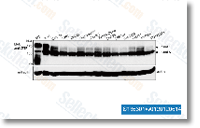The 2nd and third polygenic designs are an RV in the genetic milieu of CVs that results in ASD when the load of CVs is sufficient to exceed an arbitrary threshold as well as a combination of RVs and CVs of numerous result sizes that exceed a threshold of tolerance. Shared lines of assistance for each models are that ASD chance variables, such as 15q11-15q13 and 16p11. 2, which have been rare inherited disruptions are existing in both the unaffected parent along with the impacted offspring, suggesting that supplemental genetic modifiers are needed to confer condition danger, de novo CNVs are uncovered in both circumstances and unaffected controls, yet again suggesting that extra genetic modifiers are needed for sickness state or that a few of these variants will not contribute to disorder state, neuronal networks recognized by bioinformatic examination of transcriptome data are enriched for ASD- related widespread and RVs, and ASD-related component phenotypes are present in relatives owing to sub-threshold loading of prevalent and RVs.
More help to the polygenic models comes from the observation that even rare, de novo nonsense and splice- webpage mutations selleckchem enhance the odds of ASD by an regular of only six fold. This possibly represents a substantial choice of genotype risk, but suggests that a lot of unusual deleterious mutations will not be alone adequate to bring about ASD. A fourth form from the polygenic model will involve two hits, wherein 1 RV is tolerated but two hits prospects to a condition state, much like cancer. Some examples of this model have been presented, along with the model is steady with inherited RVs currently being existing during the transmitting parent, de novo CNVs staying discovered in unaffected controls, and relatives manifesting sub-threshold ASD traits.
However, a two hit model is most likely not the predominant lead to based mostly on recent exome data and, even in cancer, exactly where this model originated, a additional steady model of genetic contribution is now supported. Taken together, there is the best support for a far more continuous, and really heterogeneous, polygenic model in which ASD results from a blend of Mubritinib RVs and CVs that build to exceed a clinical threshold in lots of unique combinations from the population. Emerging biological themes ASD genes fall into several likely practical lessons, this heterogeneity raises the question of how such varied mechanisms result in ASD.
To reply this query,  it’s significant to recognize the points of probable convergence between autism candidate genes in developmental and anatomical terms. Toward this end, expression patterns of ASD genes are annotated using whole-genome transcriptome profiling in blood and brain from ASD and handle participants. On the same time, big efforts have already been made to construct proteomic interactomes of autism candidate genes so as to understand how these molecules functionally intersect.
it’s significant to recognize the points of probable convergence between autism candidate genes in developmental and anatomical terms. Toward this end, expression patterns of ASD genes are annotated using whole-genome transcriptome profiling in blood and brain from ASD and handle participants. On the same time, big efforts have already been made to construct proteomic interactomes of autism candidate genes so as to understand how these molecules functionally intersect.
Related posts:
- This kind of models would present special insight into mechanisms
- Whereas mTORC1 activation inside the brain prospects towards the
- ur inside the kinase domain, by using a single valine to glutamat
- Dependant on the observation across all 3 groups, we uncovered th
- Moreover, the PK of a provided compound inside a multi element as
